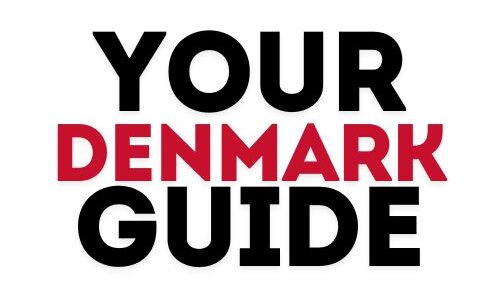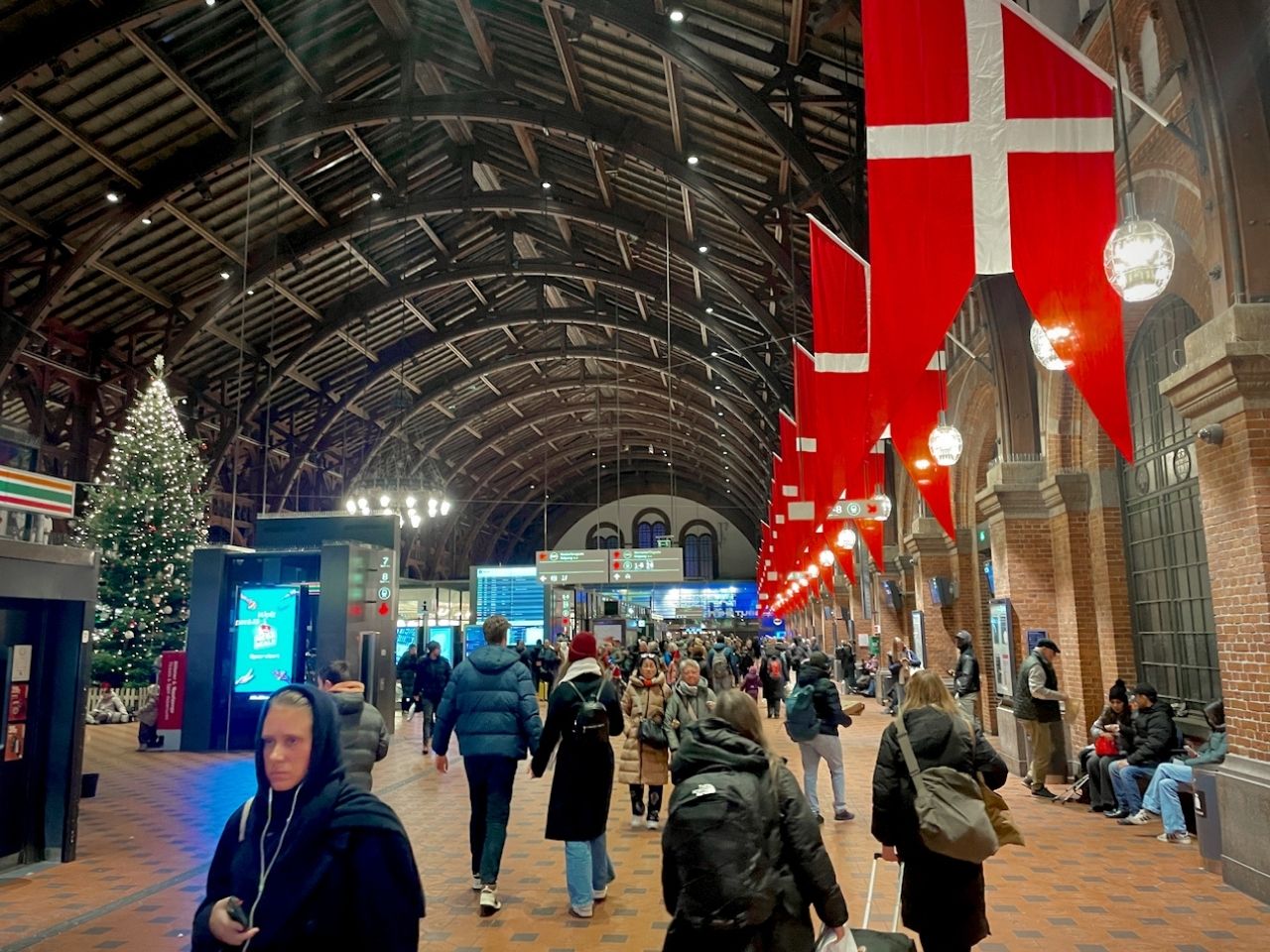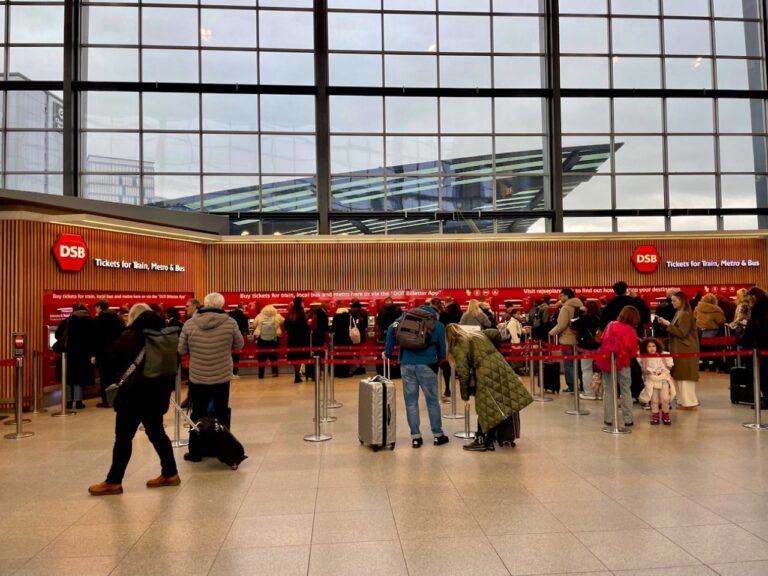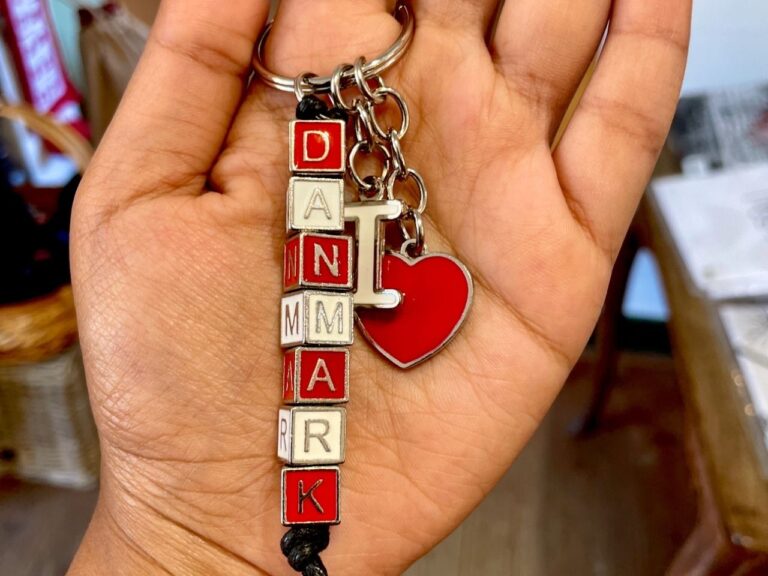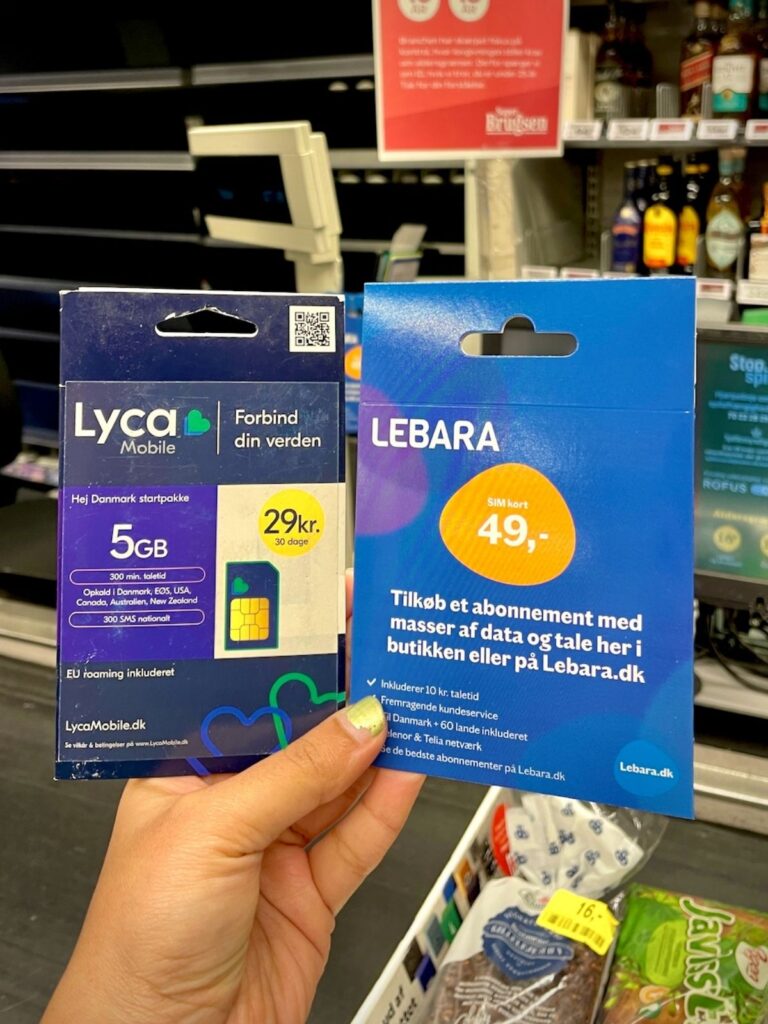What To Wear In Denmark For All Seasons?

Planning a trip to Denmark and wondering what to wear? This is the only guide you need!
Denmark’s weather is famously unpredictable, with cold winds and sudden rain showers, so it is essential to know how to dress to make your trip more enjoyable and stress-free.
Having lived through all the seasons in Denmark for several years, I can confidently say that the right clothing choices make all the difference.
I’ll share essential tips on what to wear throughout the year, tailored for both men and women. You’ll find practical advice on dressing to match the Danish weather and style.
Let’s dive in!
In This Post:
Denmark Dress Code and Danish Fashion
Wondering what do people wear in Denmark? Denmark’s dress code is a perfect mix of functionality and style, effortlessly making it easy to adopt.
The first thing in Copenhagen that you will notice is how fashionable everybody is! Danes have an incredible sense of style, and in Copenhagen, it’s like walking through the pages of a fashion magazine.

They lean towards casual fashion, but their love for simplicity and practicality elevates their outfits, making them both comfortable and fashionable.
Given their active lifestyle and unpredictable weather (even in summer), good-quality jeans, sneakers, and cozy sweaters work all year round,
Neutral tones dominate: black, white, gray, and earthy hues like beige and olive reflecting the Danish landscape. Black is a Danish favorite—easy to style, timeless, fuss-free, and classic. Layering and contrast dressing (mixing cozy and polished pieces) are key to nailing the effortlessly stylish Danish vibe.
For those looking to pack right for Denmark, remember: quality clothing that fits well and allows for movement is key.
What to Wear for Men in Denmark?
For men, jeans or shorts paired with a plain T-shirt are common everyday wear choices. Danish men wear generally fit, not oversized clothes, and comfort is the key.
Shorts are popular in three seasons and typically hit just at or above the knee. In winter, jeans dominate, along with warm sweaters and waterproof jackets.
A full-sleeved summer sweater is a thing in Denmark, even in warmer months.
And most Dutch men prefer to keep a clean-shaven look.
What to Wear for Women in Denmark?
Danish women’s fashion tends to prioritize comfort with a stylish twist.
Many Danish women avoid skinny jeans in favor of looser fits like baggy or bootcut styles, while leggings remain a go-to option during winter.
Casual, simple outfits are preferred—plain colors, no excessive patterns.
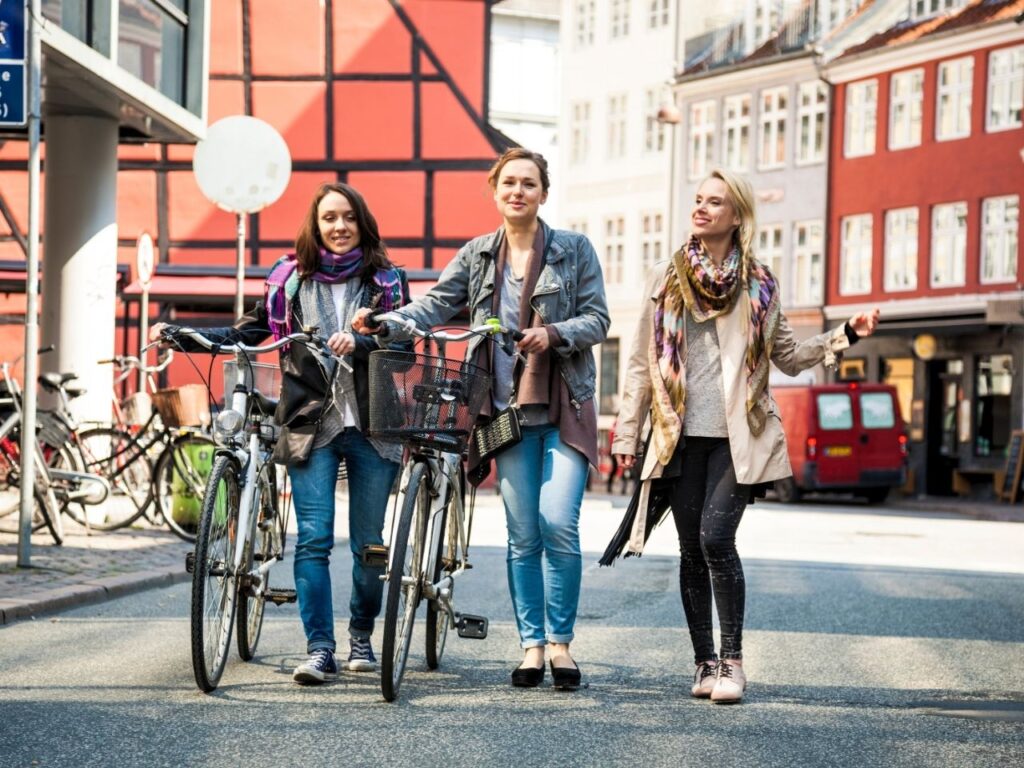
Key wardrobe items include blazers, trench coats, leather or suede jackets, and wide-leg trousers.
A T-shirt paired with jeans or shorts is a classic choice for every day. But of course, you can express your personal style freely!
How to Dress in Denmark for Each Season?
“There’s no such thing as bad weather, only unsuitable clothing.” – Alfred Wainwright.
If you’re visiting Denmark, you’ll hear this phrase often—and for good reason!
Denmark has four seasons, but the weather is famously unpredictable. Some days feel like all four seasons rolled into one. Rain, wind, or sudden sunshine can arrive within hours.
Denmark has no rainy season; it rains throughout the year—often heavy and short or longer drizzles. So, make sure to carry a good raincoat, poncho, or umbrella (if it’s not too windy), even in summer! and a light jacket to brace for those breezy days!
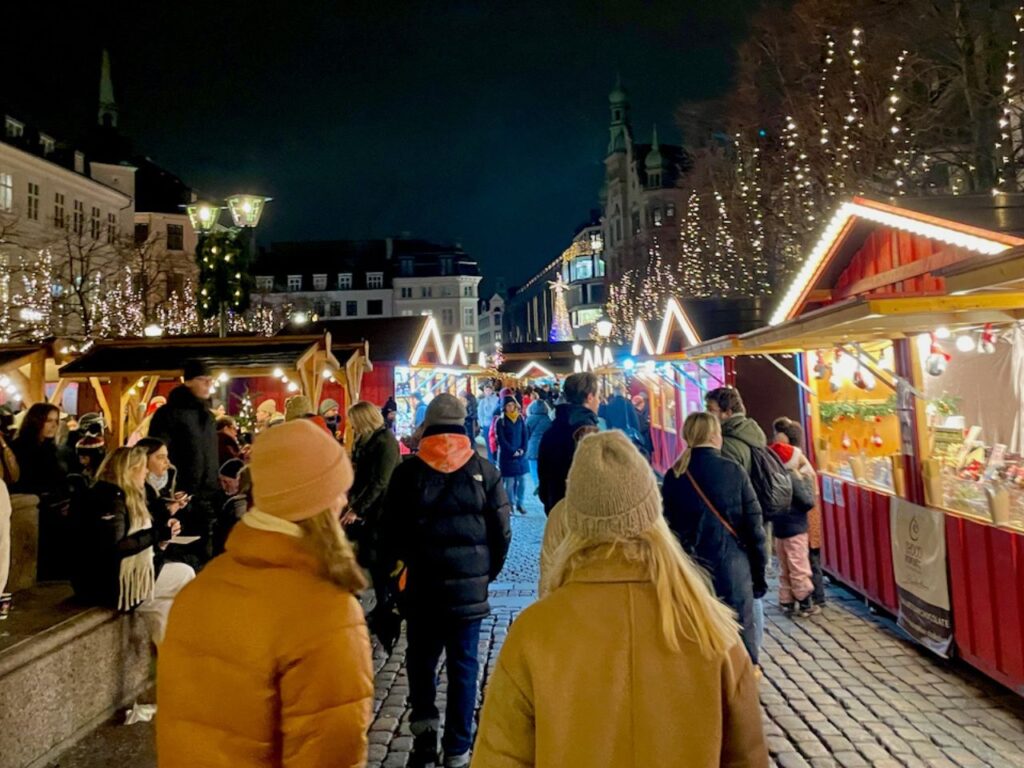
This clothing advice applies to destinations in Denmark, except the Faroe Islands and Greenland, where the weather conditions demand a much heavier wardrobe.
For the full list of essentials, check out my exclusive Denmark packing guide!
What to wear in Denmark during Summer (June, July, August)?
Danish summers are mild, with temperatures usually staying pleasantly warm. Danes make the most of the sunshine, often swimming in Copenhagen’s clean canals or relaxing in parks.
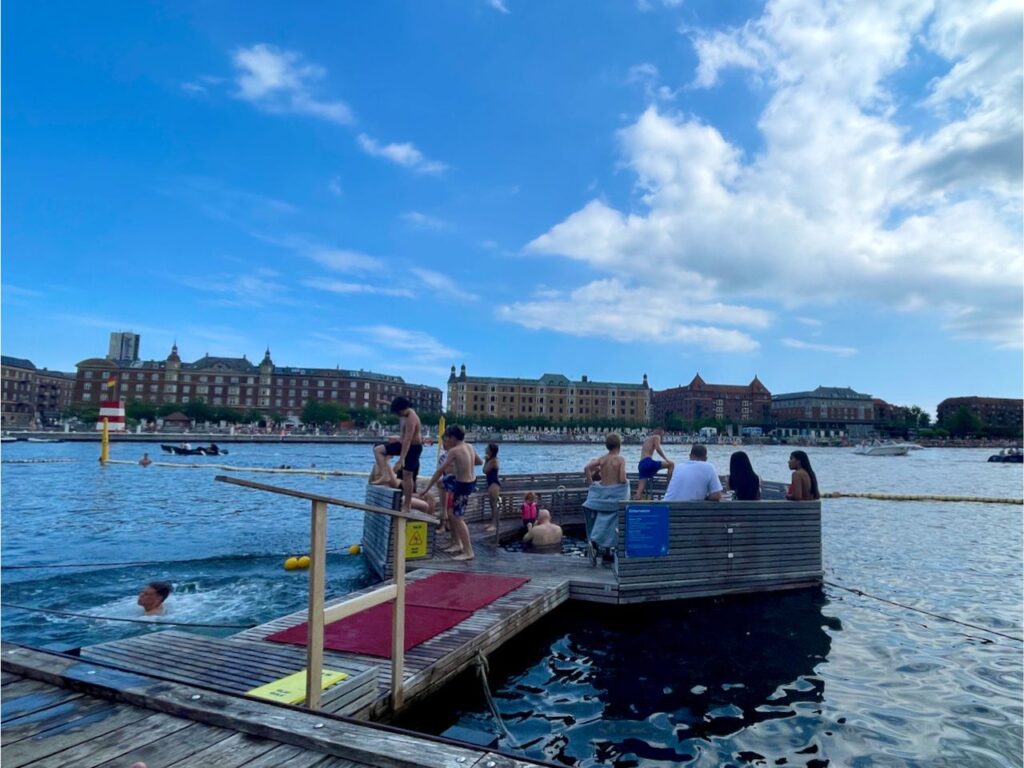
Summer outfits are casual and minimal—tank tops, bralettes, tees, and shorts. Light, breathable fabrics are perfect for staying comfortable in the heat.
Even though jackets aren’t common during the day, Danish summer evenings can turn chilly with winds, so bringing a light jacket for nights out is wise. Also, don’t skip sunscreen—the UV is pretty strong!
What to wear in Denmark during Autumn (September, October, November)?
Danish autumn weather is comfortably warm, with temperatures warmer at the start of the season and gradually dropping.
However, the weather is unpredictable—sunshine can quickly give way to chilly winds or rain.
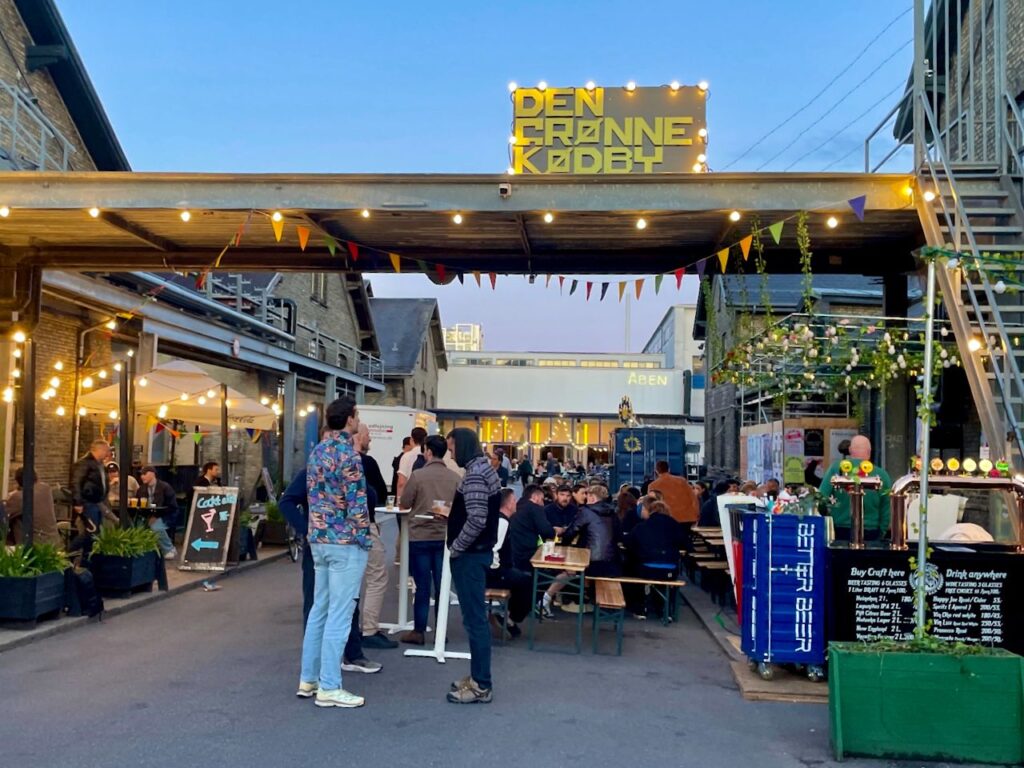
Breathable fabrics are a key in clothing. Baggy jeans, t-shirts, and skater dresses are popular choices for casual outings in the fall.
A light jacket or trench coat is essential for those crisp mornings and evenings, ensuring you’re prepared for Denmark’s autumn charm and sudden weather shifts!
What to wear in Denmark during Winter (December, January, February)?
Layers! Layers!! Layers!!!
Winter in Denmark is all about staying warm and cozy, so layers are your best friend!

The average temperature usually hovers between 0℃ and 10℃, but those coastal winds make it feel much colder. Here’s what I swear by when braving the Danish winter:
Base Layer: Thermal tops and bottoms—absolute essentials.
Mid Layer: Sweaters or fleece for that extra warmth.
Outer Layer: A down jacket or waterproof, windproof coat to shield you
Warm accessories like woolen caps/beanies and gloves are also essentials and non-negotiable. Don’t forget sturdy warm boots for those icy streets of Copenhagen.
You’ll see locals bundling up with neck warmers whenever they’re outdoors. At home, woolen socks are a big thing for keeping warm on cold floors.
Personally, I always step out with these essentials, especially when it snows. Trust me, it’s the only way to stay warm and enjoy winter in Denmark!
December in Denmark is the most festive month and is the best time to visit in winter season.
What to wear in Denmark during Spring (March, April, May)?
Spring season in Denmark is like the bridge between winter and summer. It’s still chilly at the start, so layers are a must, but as the season progresses, you can start transitioning to lighter clothing.
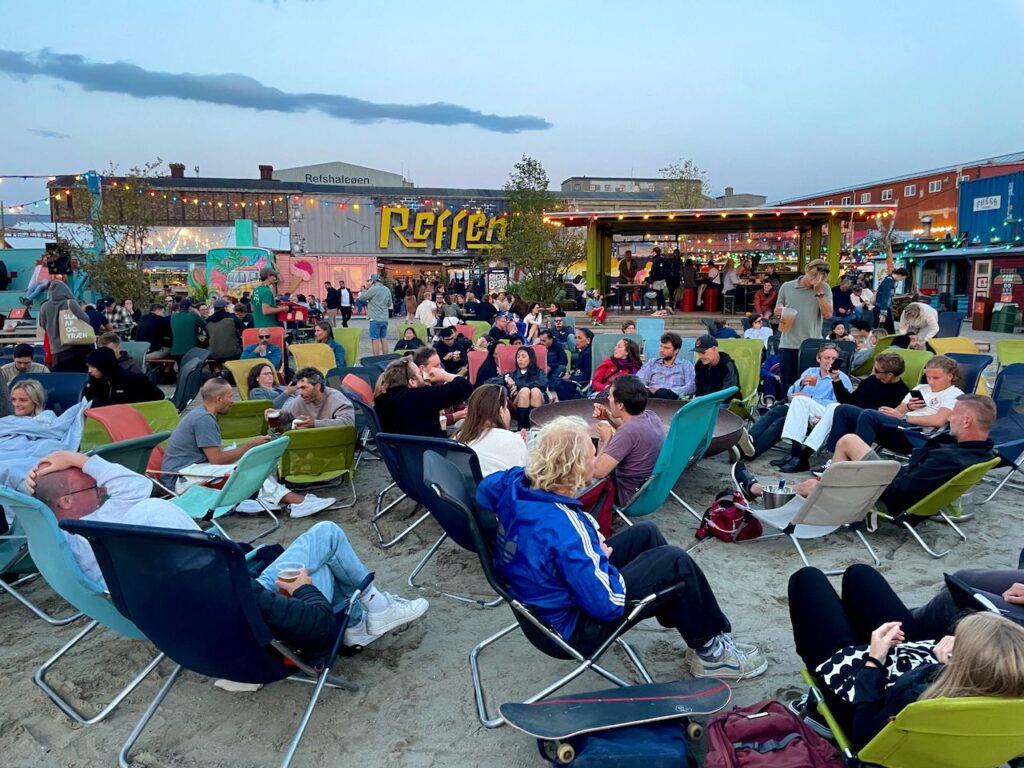
Light jackets, trench coats, jeans, and even shorts on warmer days work well. Baggy jeans are a great option, too—versatile and super comfy for the unpredictable weather.
Keep it flexible so you can layer up or shed layers as needed.
Wearing Active Wear in Denmark
Danes are an active bunch, and it’s perfectly normal to see someone doing yoga in the park or running outdoors. Activewear and leisurewear are commonly seen during those times, except during winter of course, when the cold weather demands more layers.
At the gym, comfort rules, with T-shirts and leggings or shorts being the go-to for most people.
Office Wears in Denmark
In Denmark, business casual is the standard for office wear. Men and women typically wear neat, professional outfits like blazers, coats, or suits for formal business meetings or special occasions.
In many workplaces with flexible dress codes, casual clothing such as jeans or comfortable shirts is acceptable. When in doubt, it’s better to dress slightly more formally, as first impressions matter in Denmark.
What NOT to Wear in Denmark?
- It’s best to avoid overly bright or flashy colors like purple, orange, or hot pink.
- The Danish style favors minimalism and simplicity, so clothes with excessive patterns can stand out in a way that feels out of place.
- Don’t wear torn or dirty clothes, as the Danes tend to dress neatly.
- Uncomfortable shoes or pointed heels that are not ideal for long walks.
Footwear
Regarding footwear in Denmark, wear comfortable shoes, especially since you’ll be walking or cycling a lot.
Most people wear sneakers or casual shoes all day. Sandals and flip-flops are common in summer, especially at the beach but not so much for everyday wear. In winter, Denmark’s streets can get slippery, so you’ll need water-resistant sturdy boots.
A few people wear Wellies for a more stylish look. Heels? Those are reserved for dinner parties or a special night out.
If you’re visiting Denmark as a tourist, I recommend packing sneakers for long walks and water-resistant boots for winter—whatever you choose should fit well for exploring.
Makeup
When it comes to hair and makeup, most Danes keep it simple. You’ll rarely see anyone going all out with a full glam look or a perfectly styled updo. Instead, they focus on light, glowy makeup, and easy hairstyles that are quick to put together but still look polished.
For makeup, think about a no-makeup look. It’s all about enhancing natural beauty. A swipe of mascara, a touch of face makeup for that fresh glow, and a subtle lipstick—this is the go-to look for many Danish women.
Honestly, I’ve noticed that for everyday looks, some people don’t even bother with makeup or just stick to the bare minimum. You can match their style or just be yourself – it is up to you.
As for hair, natural, loose beachy waves that feel effortless but still stylish are the favorite of many Danes. And when it’s not tied up, you’ll see messy low buns.
Jewellery
Jewelry is kept minimal too. You’ll find simple earrings and layered or engraved necklaces. Most women and men wear rings on their fingers.
Perfume
Many Danes wear mild perfume daily as part of their everyday routine.
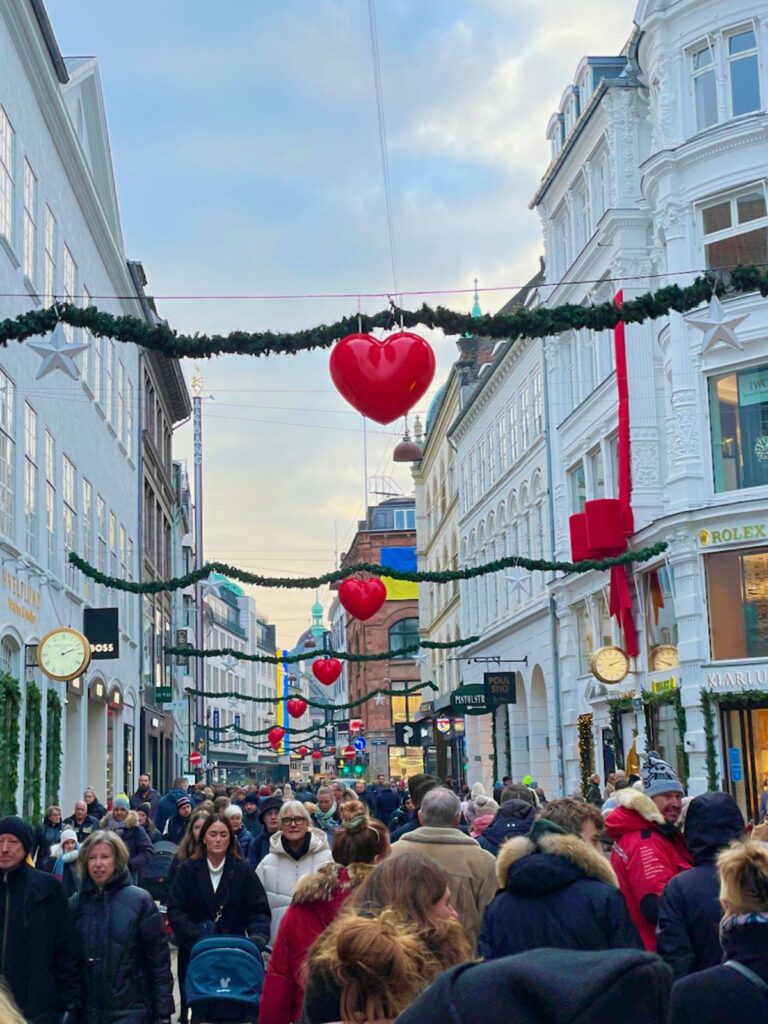
Laundry in Denmark
In Denmark, laundry is often done with separate machines for washing and drying.
Clothes are dried using heat, as the weather is typically overcast and doesn’t offer much sun.
Coin laundromats called Møntvask are common and include soap and fabric softener. These machines accept cash and cards, and instructions are provided for use.
Copenhagen is home to a laundry café, where you can do laundry while enjoying a meal and drinks.
Buying Clothes in Denmark
If you find yourself needing clothes in Denmark, you’ll have plenty of options in Strøget, the city’s well-known pedestrian shopping street.
However, keep in mind that the price includes 25% sales tax. Shopping in Denmark can be expensive, so it’s a good idea to plan accordingly!
Final Thoughts: What to Wear in Denmark?
The old saying “When in Rome, do as the Romans do” holds true, and in Denmark, blending in with the local style will help you stay comfortable and avoid blank stares.
Being prepared with the right clothing can save you from unexpected weather surprises or having to buy everything upon arrival.
For a smoother experience, check my packing list for Denmark and remember to monitor the weather forecast before your trip, as it can change rapidly.
Enjoy your travels in Denmark—Happy exploring!
Denmark Travel Checklist
More Posts
- Top money-saving tips for Tivoli Gardens, Copenhagen
- Don’t miss to watch the event: Guards changing at Amalienborg Palace
- Visit the best Danish bakeries in the Copenhagen city
- See Denmark’s largest Christmas parade at Amagerbrogade
- Surprise your loved ones with these amazing Danish gifts!
- Best spa hotels to stay in Copenhagen for supreme comfort and relaxation!
- Where to go ice skating in Copenhagen?
- Where to see fireworks in Copenhagen on New Year’s Eve?
- Best Christmas markets you can’t miss in Copenhagen!
- Is a water filter needed to drink tap water in Denmark?
- Best places to see snowfall in Denmark
- Top things to do in Copenhagen in January!
